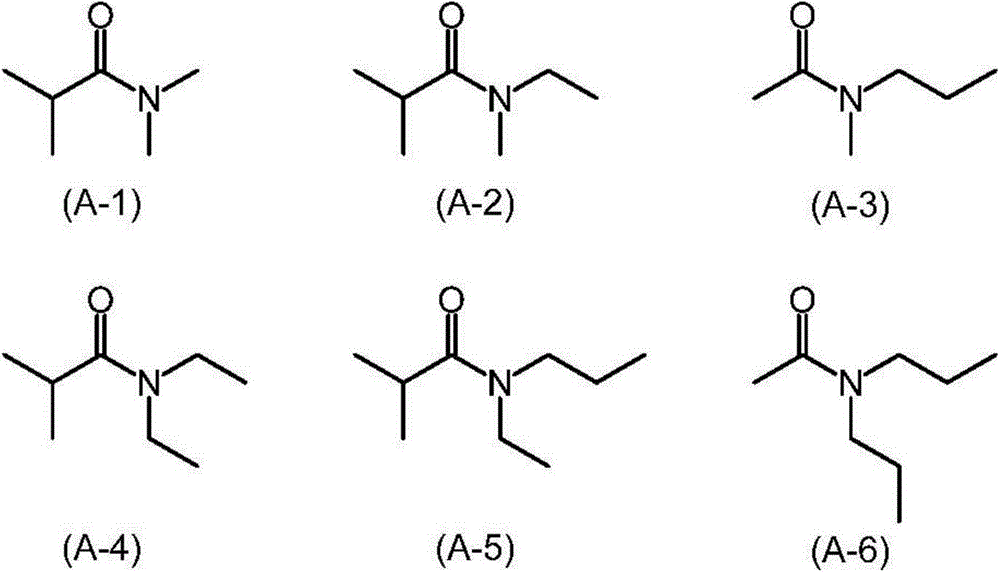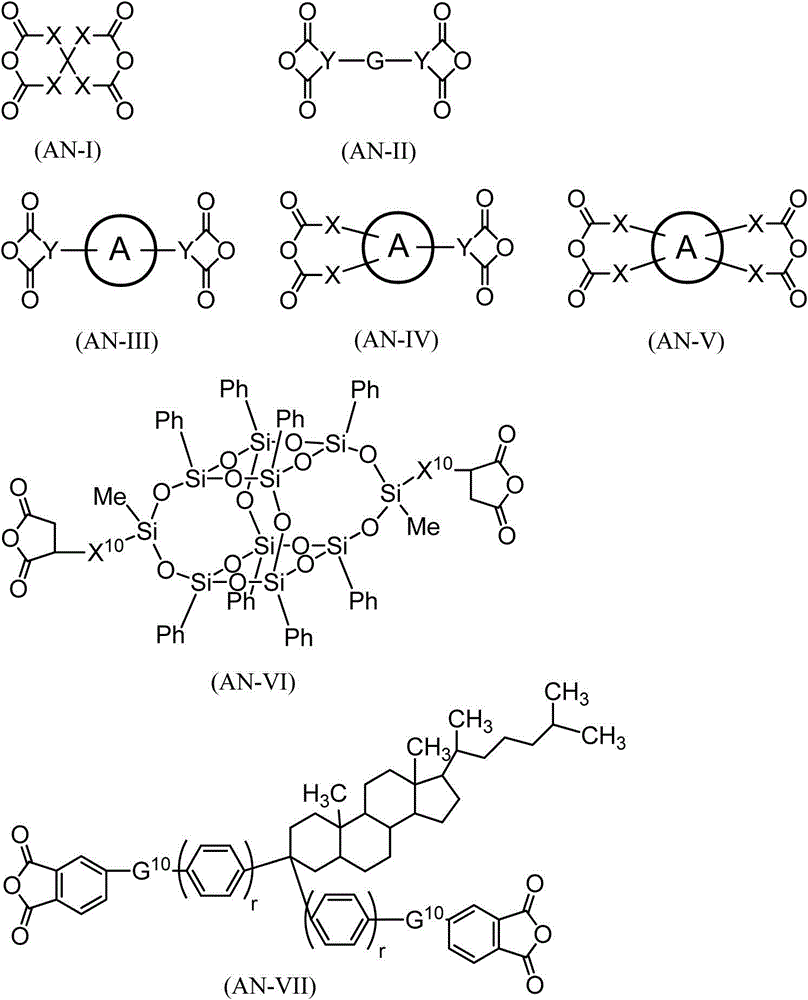Liquid crystal aligning agent, liquid crystal alignment film and liquid crystal display element
A liquid crystal aligning agent and solvent technology, used in liquid crystal materials, optics, instruments, etc., can solve the problems of uneven film thickness, easy generation of pinholes, and poor afterimage characteristics.
- Summary
- Abstract
- Description
- Claims
- Application Information
AI Technical Summary
Problems solved by technology
Method used
Image
Examples
Embodiment
[0468] Hereinafter, although an Example demonstrates this invention, this invention is not limited to these Examples. Evaluation methods in Examples are as follows.
[0469]
[0470] The weight average molecular weight of a polyamic acid is calculated|required by the GPC method using 2695 separation module · 2414 differential refractometers (made by Waters), and performing polystyrene conversion. The obtained polyamic acid was diluted with a phosphoric acid-dimethylformamide (DMF) mixed solution (phosphoric acid / DMF=0.6 / 100: weight ratio) so that the polyamic acid concentration became about 2 wt%. HSPgel RT MB-M (manufactured by Waters) was used as a column, and the mixed solution was used as a developing solvent, and the measurement was performed under the conditions of a column temperature of 50° C. and a flow rate of 0.40 mL / min. As the standard polystyrene, TSK standard polystyrene manufactured by Tosoh Co., Ltd. was used.
[0471]
[0472] The viscosity of polyamic ...
Synthetic example 1
[0510] Add 1.4291 g of diamine (DI-5-1, m=2) and 18.5 g of dehydrated DMIB to a 50 mL brown four-necked flask equipped with a thermometer, a stirrer, a raw material input port, and a nitrogen gas inlet, and carry out under a dry nitrogen stream. Stir to dissolve. Then, 0.6899 g of acid dianhydride (AN-1-13), 0.8810 g of acid dianhydride (AN-3-2), and 18.5 g of dehydrated DMIB were added, and stirring was continued at room temperature for 24 hours. BC10.0g was added to this reaction solution, and the polyamic-acid solution whose polymer solid content concentration was 6 wt% was obtained. Let this polyamic-acid solution be PA1. The weight average molecular weight of the polyamic acid contained in PA1 was 84,000.
[0511] [Synthesis Example 2 to Synthesis Example 22]
[0512] Except for changing the solvent composition, tetracarboxylic dianhydride and diamine as shown in Table 1, polyamic acid solutions (PA2) to polyamic acid solutions (PA22) with a polymer solid content conce...
Embodiment 1
[0524] The viscosity immediately after the synthesis of the polyamic acid solution (PA1) having a polymer solid content concentration of 6 wt% prepared in Synthesis Example 1 was measured to be 39.3 Pa·s (initial viscosity). In addition, the viscosity of this varnish after storage at room temperature for 30 days was measured and found to be 38.0 Pa·s. By this method, the printability (recess property) was confirmed visually, and as a result, the dent of the alignment agent was not seen.
PUM
| Property | Measurement | Unit |
|---|---|---|
| Viscosity | aaaaa | aaaaa |
| Film thickness | aaaaa | aaaaa |
Abstract
Description
Claims
Application Information
 Login to View More
Login to View More - R&D
- Intellectual Property
- Life Sciences
- Materials
- Tech Scout
- Unparalleled Data Quality
- Higher Quality Content
- 60% Fewer Hallucinations
Browse by: Latest US Patents, China's latest patents, Technical Efficacy Thesaurus, Application Domain, Technology Topic, Popular Technical Reports.
© 2025 PatSnap. All rights reserved.Legal|Privacy policy|Modern Slavery Act Transparency Statement|Sitemap|About US| Contact US: help@patsnap.com



